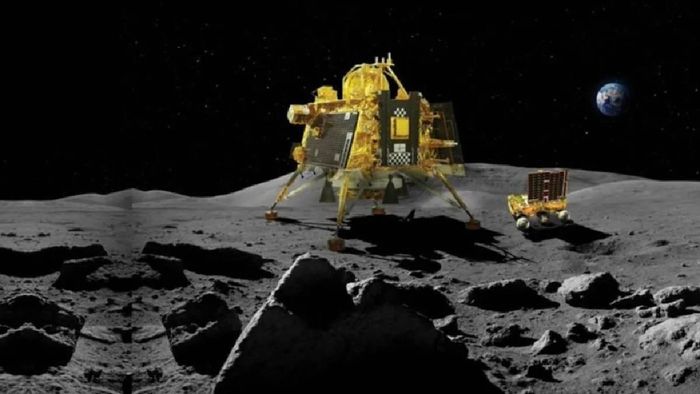ISRO's Vikram Lander detects mysterious tremors on Moon
"This discovery is significant because NASA wants to eventually build a lunar base and return men to the Moon in a few years with the Artemis missions".

- Sep 11, 2023,
- Updated Sep 11, 2023, 12:22 PM IST
Scientists have discovered that the Moon is not a silent place and that the lunar surface frequently suffers "thermal moonquakes" owing to significant temperature changes. This discovery comes days after Chandrayaan-3's Vikram lander recorded a "natural" seismic event on the Moon.
Francesco Civilini, a recent postdoc at Caltech, led the study, which was published in the Journal of Geophysical Research.
Without an atmosphere to control its temperature, the Moon experiences extreme variations in temperature, ranging from up to 120 degrees Celcius during the day to -130 degrees Celcius at night. The lunar surface contracts and expands as a result, causing thermal moonquakes, which are little trembling and cracking events.
Data for this study was obtained from seismometers placed on the Moon by the Apollo 17 mission in the 1970s.
The data, which had remained largely untouched, was reanalysed using modern techniques like machine learning. The study found that thermal moonquakes occur with remarkable regularity every afternoon as the Sun leaves its peak position in the sky and the lunar surface begins to cool off.
The research did find extra seismic activity, though, that was distinct from the nocturnal moonquakes and occurred in the morning. These were later determined to be vibrations from the Apollo 17 lunar lander base rather than thermal moonquakes. The seismic array picked up the groaning vibrations of the building as it warmed and expanded in the morning.
Allen Husker, a research professor of geophysics and co-author on the new study, explained, "Every lunar morning when the sun hits the lander, it starts popping off. Every five to six minutes another one, over a period of five to seven Earth hours. They were incredibly regular and repeating."
This discovery is significant because NASA wants to eventually build a lunar base and return men to the Moon in a few years with the Artemis missions.
It is crucial to comprehend the thermal contraction and expansion that upcoming lunar landers and their supporting machinery must resist.
Another important insight offered by seismic waves is information about the subsurface.
"We will hopefully be able to map out the subsurface cratering and to look for deposits," Husker said. He further added that seismometers could potentially detect water ice trapped in the subsurface of permanently shadowed regions at the Moon's South Pole.
Despite the absence of plate tectonics or volcanic activity on the Moon, many questions about its internal structure remain unanswered. This study marks a significant step towards understanding our celestial neighbor better.